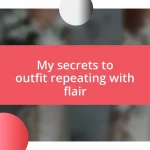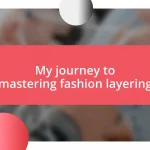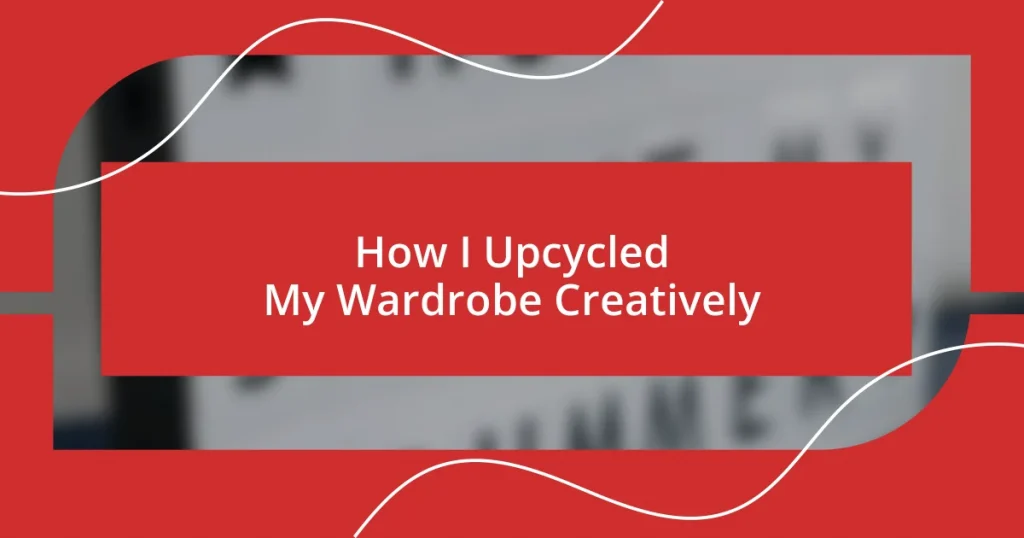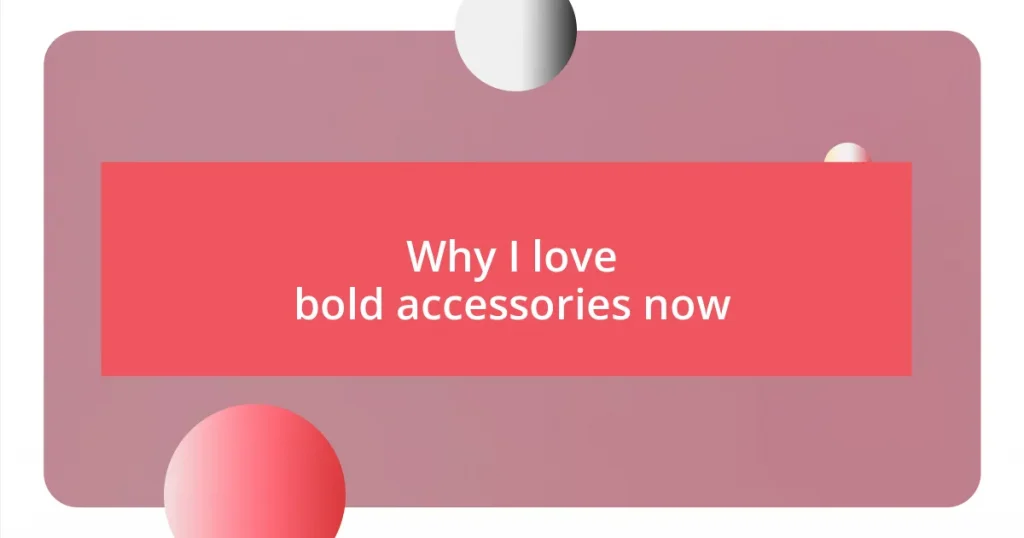Key takeaways:
- Upcycling reduces waste and fosters individuality, allowing for unique fashion statements that reflect personal stories.
- Assessing your wardrobe systematically helps identify items for upcycling, enhancing creativity and authenticity in style.
- Maintaining an upcycled wardrobe involves gentle care, proper storage, and regular evaluations to keep pieces looking their best and inspire new creations.

Understanding Upcycling Benefits
One of the most striking benefits of upcycling is its positive impact on reducing waste. I remember cleaning out my closet and stumbling upon a pair of jeans I hadn’t worn in years. Instead of tossing them, I transformed them into a trendy tote bag—now I carry it everywhere! It’s incredible how a little creativity can breathe new life into what would otherwise be forgotten in a landfill.
Upcycling also fosters a unique sense of individuality in fashion. Have you ever worn something that sparked a conversation or made you feel truly unique? When I crafted a statement necklace from old buttons, it wasn’t just about style—it was like wearing a piece of my story. Each time someone admired it, I felt a rush of pride knowing it was one-of-a-kind and completely me.
Moreover, the emotional rewards of upcycling are profound. Engaging in this sustainable practice allows you to nurture creativity while embracing sustainability—a two-for-one deal, if you ask me! I recall the satisfaction I felt when I finished upcycling a vintage dress. The joy wasn’t just in reviving it; it was about honoring its past while making it my own, connecting with the fabric and history in a way that fast fashion never could.
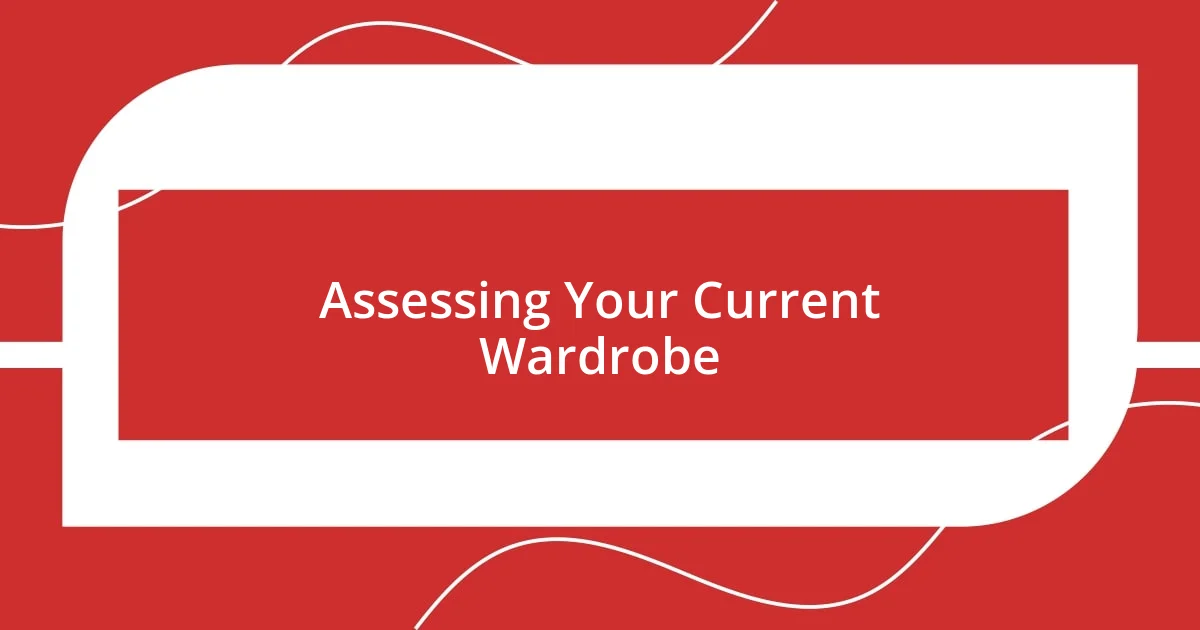
Assessing Your Current Wardrobe
To effectively assess your current wardrobe, I find it essential to approach it with a fresh perspective. Step into your closet as if you’re on a treasure hunt. Look closely at each item, considering not just its condition but how it aligns with your personal style today. I recall a time when I unearthed a floral dress I once adored but hadn’t worn in over a year. Its vibrant colors moved me, but it also sparked a realization: I had changed, and so had my taste. This thoughtful reflection allows you to see what truly resonates with you.
While you’re evaluating, it can be helpful to create a systematic checklist:
– Evaluate fit: Does it flatter your current body shape?
– Consider comfort: Is it something you genuinely enjoy wearing?
– Reflect on frequency: How often have you worn it in the past year?
– Assess versatility: Can it be styled in multiple ways for different occasions?
– Identify sentiments: Does it hold a special meaning or memory for you?
By answering these questions, I believe you’ll uncover valuable insights that will guide your upcycling journey and help you curate a wardrobe that feels truly authentic.

Gathering Necessary Materials
Gathering necessary materials for upcycling your wardrobe can be an exciting adventure. I usually start by diving into my fabric stash. Whether it’s old clothes, remnants from previous projects, or even fabric samples I’ve collected over time, it’s essential to have a variety of materials at hand. Once, I found a stack of vibrant fabric remnants from a project gone by, and they sparked an idea for a patchwork skirt that I still wear proudly.
Next, I look for tools and supplies. Keeping a well-organized crafting space makes it easy to grab everything I need for a creative upcycling session. Think about items like scissors, threads, fabric glue, and sewing needles. I once struggled with a project because I couldn’t find my fabric glue, and that little setback made me realize how crucial it is to have everything gathered and ready. Preparing your materials not only streamlines the process but also ignites your creativity.
Lastly, consider embellishments and accessories to elevate your projects. Buttons, lace, or even old jewelry can add character to an upcycled piece. I still remember the day I scavenged through my grandmother’s jewelry box and unearthed some vintage brooches. They became the perfect finishing touch on a jacket I transformed, reminding me of her every time I wore it. Gathering these materials is not just about logistics; it’s about creating a treasure trove of inspiration.
| Materials | Examples |
|---|---|
| Fabrics | Old clothes, fabric remnants, quilt pieces |
| Tools | Scissors, sewing machine, fabric glue |
| Embellishments | Buttons, lace, vintage jewelry |
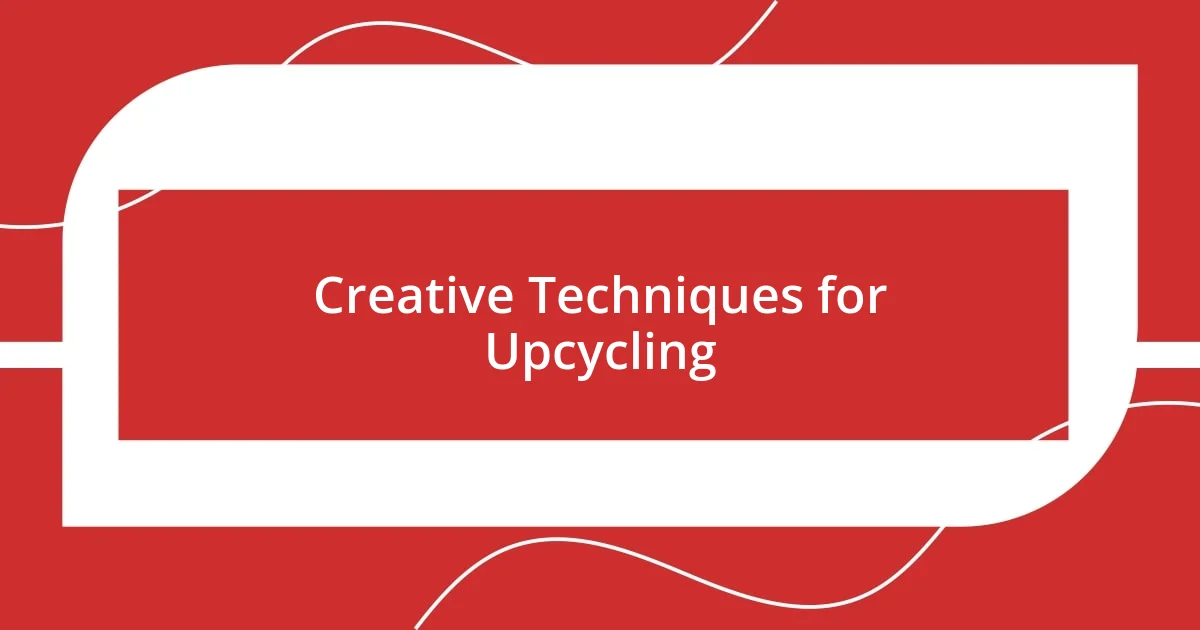
Creative Techniques for Upcycling
Finding inspiration for upcycling can sometimes feel like chasing shadows, but I often turn to online platforms for fresh ideas. I remember scrolling through Instagram one evening and discovering a DIY transformation of a simple white shirt into a trendy crop top. It ignited a spark in me! How often do we overlook the potential of basic pieces just waiting for a creative touch? Engaging with a community of fellow upcyclers not only provides motivation but also reveals techniques that I might not have considered before.
One technique that has brought me much joy is the art of dyeing. Armed with natural dyes from items like avocado pits or turmeric, I once transformed a faded tank top into a sunset marvel. The process is not just about changing the color; it’s a meditative experience, as I watch the fabric slowly absorb the hues. Have you ever experimented with colors in your wardrobe? It’s astonishing how a simple change can breathe life into something you thought was past its prime.
I also love incorporating unique textures through stitching and patching. Last summer, I painstakingly stitched on denim patches onto an old pair of jeans, creating a one-of-a-kind masterpiece. This technique transformed them from ordinary to extraordinary—and trust me, the compliments I received made the effort worthwhile! It’s such a fulfilling feeling to wear something that reflects not just your style, but also your creativity. What’s stopping you from grabbing that needle and thread? The only limit is your imagination!

Inspiration from Successful Projects
Exploring successful upcycling projects from others has been a tremendous source of inspiration for me. I once stumbled upon a blog where someone transformed an old blazer into a chic tote bag. The way they shared their process and the stunning photos drew me in. It made me realize that often, the simplest items can find new life in unexpected ways. Have you ever looked at something faded and thought about what it could become?
Another memorable project that sparked my creativity was a YouTube tutorial showcasing a dress conversion. I watched fascinated as an oversized dress became an adorable sundress, complete with ruffles. Watching the host’s excitement was contagious. It reminded me that it’s not merely about the end result, but also the joy of creating something uniquely yours. How often do we let a piece just sit in our closet instead of giving it a second chance?
Lastly, I can’t forget the impact of community inspiration, especially from online groups dedicated to upcycling. I joined a Facebook group where members share their creative endeavors, and someone posted about using old flannel shirts to make cozy quilts. The warmth of that quilt isn’t just physical; it’s emotional too. I felt a deep connection to the stories people shared about their projects, reminding me that every piece carries memories and possibilities. What story will your next creation tell?

Practical Tips for Upcycling Success
When embarking on your upcycling journey, starting with a plan can make all the difference. I often create a mood board filled with images that resonate with me, whether that’s a color palette, patterns, or even textures that catch my eye. Have you ever felt overwhelmed by choices? A visual reference not only clarifies my vision but also keeps the creative energy flowing when I hit a road bump. It’s like having a compass guiding me through the upcycling process.
Don’t shy away from experimenting with various techniques! I remember my first time trying to bleach an old black sweatshirt—it didn’t go quite as planned, resulting in a splotchy mess. But you know what? That failure didn’t deter me; instead, it taught me valuable lessons about color and texture. Looking back, I think: have you ever made a mistake that led to something unexpectedly awesome? Embracing those little surprises can truly enhance your creative journey.
Lastly, I can’t stress enough the importance of patience. Upcycling isn’t always a quick fix, and sometimes, projects can take longer than you anticipated. I once spent an entire weekend meticulously beading a jacket, only to realize I wasn’t quite finished after the first day. But oh, the satisfaction of finally stepping into that unique piece sparked joy like no other! Have you allowed yourself the time to fully embrace a project? Remember, the journey can be just as rewarding as the finished product.

Maintaining Your Upcycled Wardrobe
Maintaining an upcycled wardrobe requires a little extra care, but the rewards are well worth it. I’ve found that washing my upcycled pieces gently—either by hand or in a delicate cycle—helps preserve their integrity. It’s easy to forget that these items often have diverse materials mixed together, which can wear down more quickly than something brand new. Have you ever experienced heartbreak over a beloved piece falling apart too soon?
Storage plays a crucial role in keeping your unique creations looking their best. I like to hang items that can easily lose shape, while sweaters and heavier garments get folded neatly to avoid stretching. It’s as if I’m curating a mini exhibition of my creativity! How do you display your cherished pieces? Finding the right storage solution can make all the difference in maintaining the memories woven into each garment.
Lastly, don’t underestimate the power of regular evaluations. I like to revisit my upcycled wardrobe every few months. This not only helps me refresh my style but allows me to give items the attention they deserve. During one of these sessions, I realized a patchwork skirt could use some new embellishments, sparking a refreshing wave of creativity. Have you ever found inspiration just by simply looking at your closet differently? Each piece has a story, and sometimes, it’s just waiting for us to breathe some new life into it.








